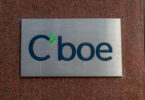Crypto-assets were a key topic at least week’s AGM for derivatives trade association ISDA. Key topics covered include ISDA’s work on standards for crypto-assets and regulation of both crypto firms and traditional financial (TradFi) institutions getting involved in the sector.
Numerous cryptocurrency firms are now ISDA members, including Algorand, B2C2, Coinbase, ConsenSys, Elwood Technologies, FTX US, and OK Coin.
Contractual standards for crypto derivatives
Since last year ISDA has been working on contractual standards for cash-settled forwards and options for Bitcoin and Ether. Talking about TradFi institutions, Nicola White, president of B2C2 USA said, “they are looking to get into the space primarily through derivatives as their first foray – they’re not necessarily ready for exposure to the blockchain. They want to get into something they’re comfortable with, they’re used to and their systems support.” Goldman Sachs and Nomura recently said they offer OTC options to clients.
But cryptocurrencies have particular features such as blockchain forks and airdrops of free tokens, which don’t fit into conventional derivatives standards. Hence the need for standards.
Crypto-asset regulation
Regulation has many facets ranging from how regulations are applied to TradFi versus new crypto firms to FTX’s U.S. proposal to clear margin products directly, without intermediaries for retail users.
On the TradFi front, we previously wrote that the head of the Basel Committee had managed expectations that it doesn’t plan to relax the heavy balance sheet proposals for bank exposures to crypto-assets.
“The proposed 1,250% risk weight for certain crypto assets is designed to ensure banks hold capital at least equal in value to their exposures,” said ISDA CEO Scott O’Malia at the AGM. “We think this is excessive. Capital standards that more appropriately reflect the risk of crypto assets would enable banks to respond to client demand – in turn, broadening market participation and liquidity.”
In March, he commented on the impact of these hefty requirements. “Bank clients wanting crypto exposure will therefore have no choice but to use firms not subject to prudential supervision.”
But for how long will they sidestep supervision?
Martin Moloney, secretary-general of the International Organization of Securities Commissions (IOSCO), addressed crypto-asset firms using a wild west metaphor saying, “it’s kind of time for a sheriff to come to town.”
He believes the crypto sector should be prepared to meet the same regulatory standards as traditional finance.
What may not be fully appreciated is the aggressive balance sheet requirements could be applied to new crypto firms. This is consistent with the IOSCO statements and a paper from the Bank for International Settlements (BIS) this week, specifically proposing applying Basel balance sheet rules to crypto newcomers. It expects this to cause consolidation in cryptocurrency exchanges.
Digital asset accounting standards
Additionally, last week ISDA published a paper on accounting standards for crypto-assets. A key challenge is the U.S. accounting treatment for native digital assets that don’t reference real-world assets. They are treated as intangible assets, which means their value does not get marked to market prices. As a result, impairment losses have to be recognized on the balance sheet, but gains are not. Hence, the balance sheet may not represent the true status. This and other issues are explored in the ISDA paper.







